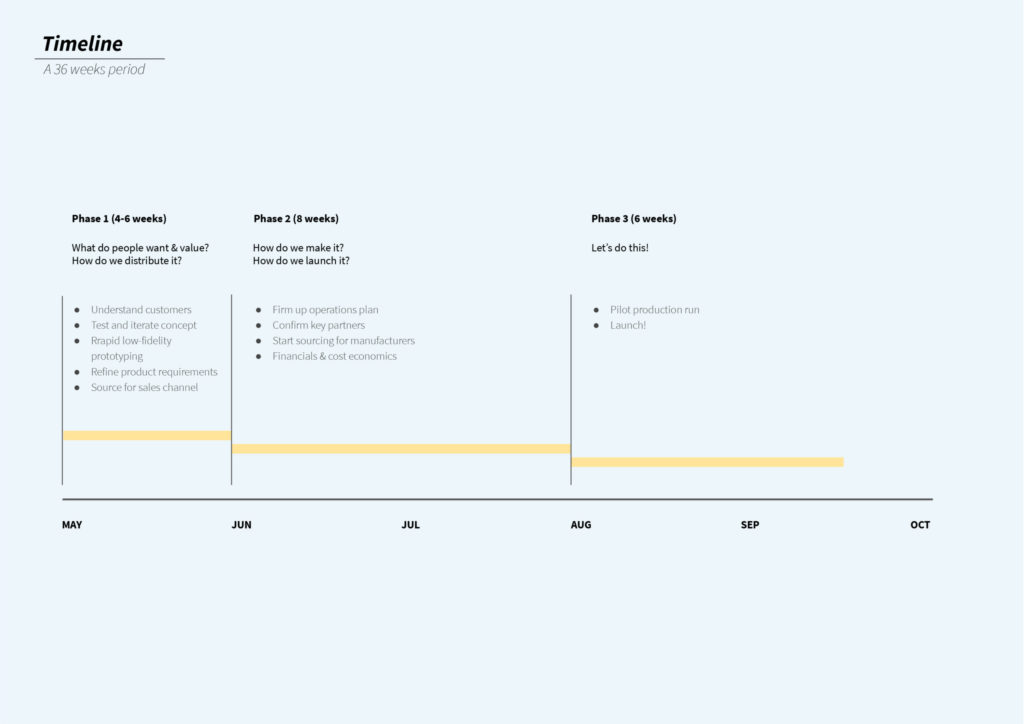
Design Challenge
#3: How might we learn from COVID-19 to reimagine our future for life, work, learning and play?
Project Description
In Singapore, a meal less than $5 is readily available, many residents eat out or tabao food home instead of cooking. Now, dining out is no longer an option and those who don’t make their own food are turning to tabao-ing food home. We are likely creating even more plastic waste currently – every tabao is an additional set of single-use plastic waste used. We believe improving access to reusable food containers will encourage people to use them. By designing affordable and resilient reusable products, more people will adopt them, switching from recycling to reusing. So, we propose – KopiChu, an affordable, resilient, reusable food container for local cuisine.
Criteria #1: Value
If a family of two tabao food home from a nearby kopitiam for two meals a day, that adds up to 4 sets of plasticware every day, almost 30 sets in a week and 120 sets in a month! Some food vendors we spoke to are already concerned if supply might run short or that the cost of single-use food packaging might increase. Chatters among peers suggest there’s an intention to switch to reusable food containers. Yet, reusable food containers are not easily available. KopiChu caters to the environmentally savvy population who frequently tabao food home. KopiChu also serves food vendors as an alternate, cost-effective packaging source.
Criteria #2: Inspiration
Research showed that certain habits would prevail post COVID 19. In Singapore we have gathered sentiments of emerging environmental savvy groups, inspiring us to pursue this cause. Alongside this, lessons were drawn from strategies to how governments tackle single-use plastic; specifically the legislation in the UK passed in 2015 giving birth to the ‘Bags for Life’. This showed us that resilient products proved habits for reuse; better than recycling. We believe if carefully adapted, this model can integrate into our local food industry. Learning from the typical banana leaf packaging, flat during storage and keeping food ventilated when in use, we believe the product can first provide access to reusable plastics and subsequently inspire positive behavioral shifts.
Criteria #3: Impact
While the higher collective goals are to lessen plastic consumption, the idea impacts positively on individual customer forefront experience. By improving access to reusable containers, customers will spend less within a short period of time. Additionally, KopiChu is designed to retain the quality of food and enhances the dining out experience. Design features embrace the nature of local cuisine (see Image #1). For stall owners, there will be less reliance on disposable plastics and their storage space. Marking-up of products for packaging costs is obliterated. Through repeated cycles, long term use of the product reinforces identity value, positively impacting the psychological wellness (feel good factor) and responsible consumption attitudes.
Criteria #4: Timeliness
Phase 1 (4-6 weeks): We are going to take small steps to stay responsive and adapt – to understand our customers, test and iterate KopiChu’s concept. This will involve several cycles of rapid low-fidelity prototyping to refine our product requirements for the first batch of small scale production. We will also be starting to reach out to food vendors who are keen to partner with us for the sales of KopiChu.
Phase 2 (8 weeks): We will firm up our operations plan, confirm key partners we will work with and start sourcing for manufacturers. We will also be working out our financials and the cost economics of bringing KopiChu to launch.
Phase 3 (6 weeks): Pilot product run > launch!
(see Image #3)
Criteria #5: Systems Thinking
KopiChu starts off as a product design concept and we envision scaling it into a service concept.
The current idea (pending validation) is that we will first sell KopiChu to customers through local food vendors. KopiChu will first launch targeting people who tabao food home. We hope to eventually scale it to encourage further adoption nationwide. To do so, we will:
– expand sales/partners channel to include food vendors in commercial buildings to target working crowds who tabao lunch
– team up with other local or global initiatives to reduce plastic waste


